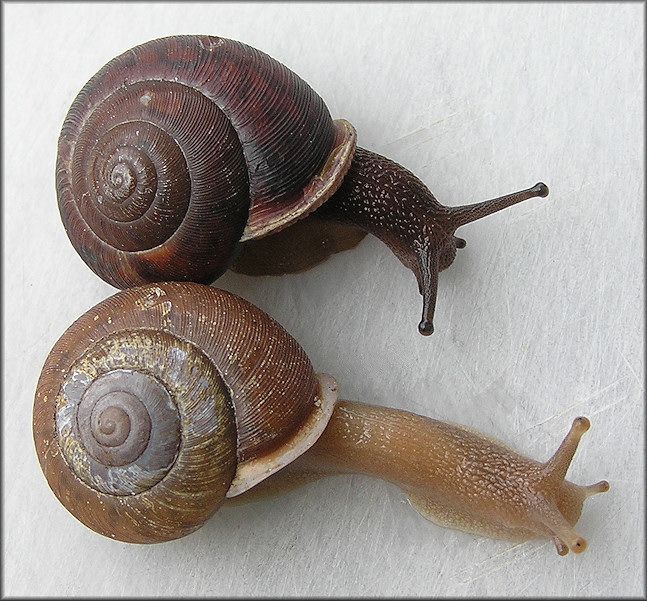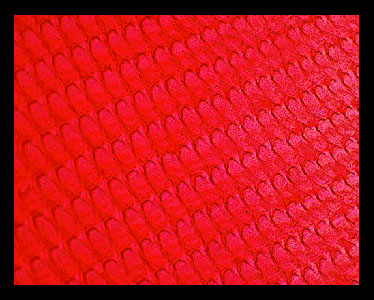Nutrition
The majority of gastropods are herbivores. More specifically, the primary food of species belonging to the family Polygyridae is the mycelia, or vegetative part, of fungus (Pilsbry, 1940).
These snails use their radula for scraping vegetation, such as seaweed or algae, in order to feed (Hickman et al. 2012). A radula is an organ similar to a tongue and its location is shown in the picture below. This rasping organ is also protrusible, or able to be extended. Many small chitinous teeth are attached to the ribbonlike membrane. These teeth are pointed backward. The microscope slide on the right displays a stained portion of a snail radula, in which the chitinous teeth may be observed (Hickman et al. 2012). Polygyridae have a ribbed jaw and possess both lateral and central teeth (Pilsbry, 1940). The radula and odontophore, or supporting cartilages, are capable of moving both out and in of the mouth by the use of protractor and retractor muscles. Under a constant flow, food fragments are transferred by the radula in the direction of the snail's digestive tract (Hickman et al. 2012). Symbiotic bacterial colonies are necessary in order for the snails to digest the vegetation they consume (Hickman et al. 2012).
Snails are nocturnal; therefore, they search for food at night or early morning. In order to maintain a protective shell, snails must consume foods which contain a significant quantity of calcium (Snail-world, 2012). Snails often fulfill their calcium needs by eating wood, plants, fungi, and algae. In addition, calcium is located in the soil which they frequently consume. During digestion, the ingested calcium is absorbed and then used by the mantel to form the shell (Carnegie Museum of Natural History, 2012).
Continue on to read about reproduction or return home.




